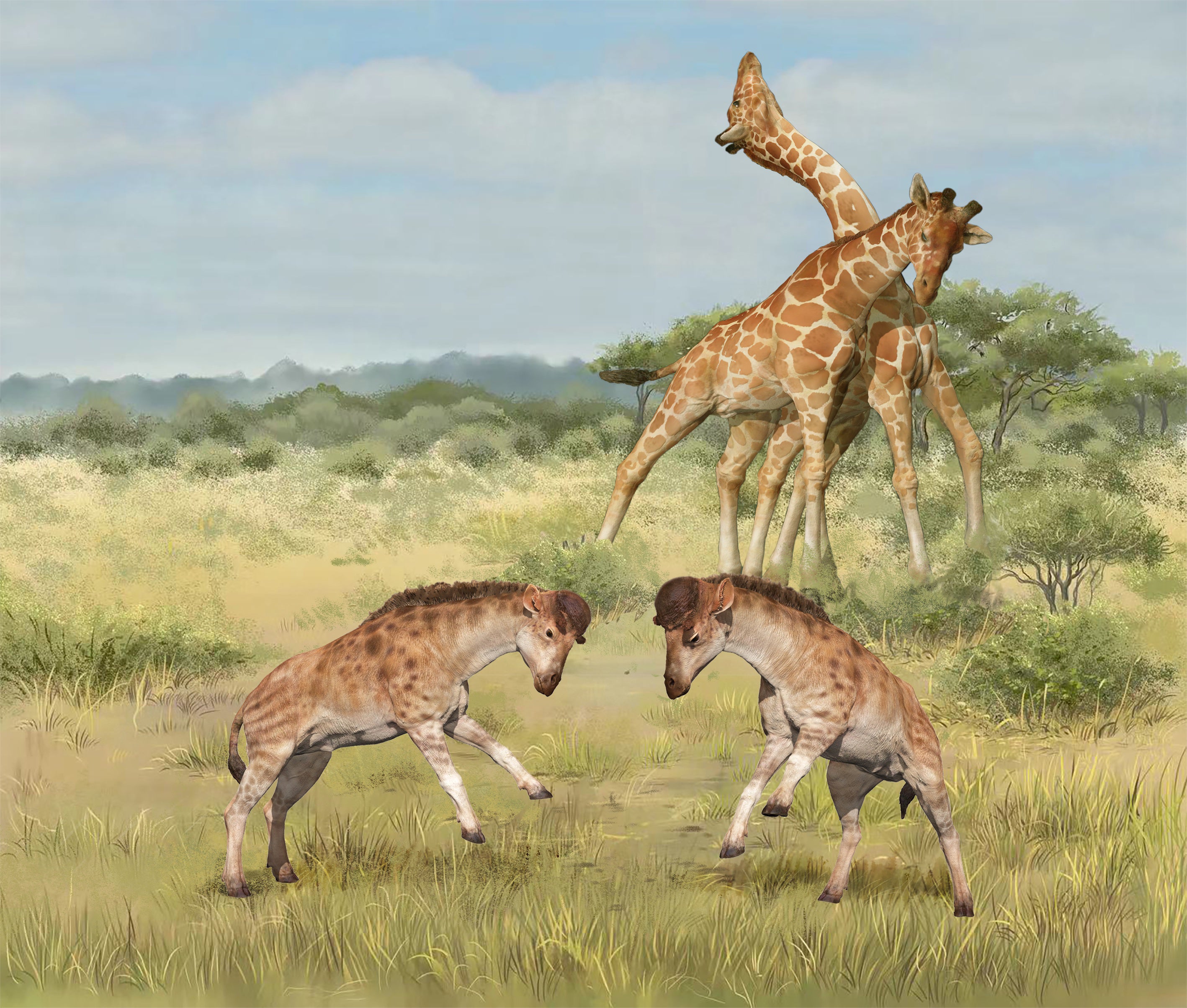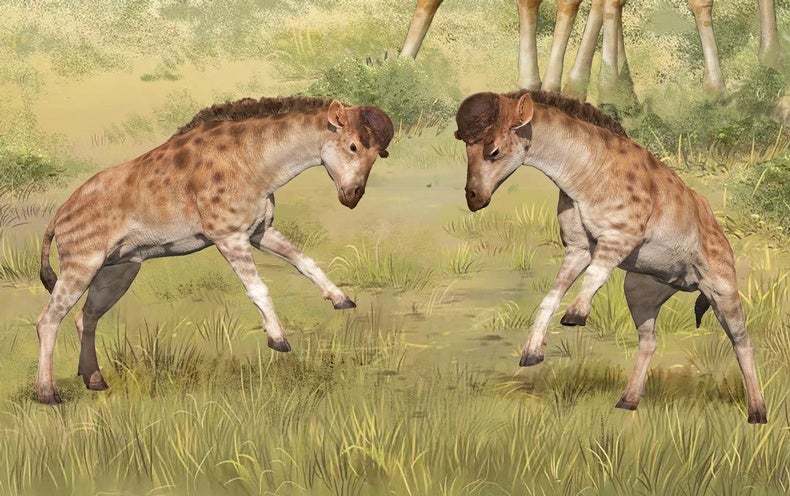
When paleontologist Jin Meng uncovered a strange skull in the vast, dry expanse of northern China’s Junggar Basin in 1996, he immediately had a hunch about the favorite activity of the ancient animal it came from. The skull was robust and heavily built, with a bony plate of nearly one-inch-thick bone around the area where the animal’s forehead would have been. A few neck vertebrae Meng discovered nearby were also conspicuously thickened, implying they were built to withstand a tremendous amount of force. This new species, he realized, may have bested even dinosaurs in the violent sport of headbutting.
For years, Meng, who is now curator in charge of fossil mammals at the American Museum of Natural History in New York City, and his colleagues at the Chinese Academy of Sciences simply called their discovery guài shòu, or “strange beast.” Now the strange beast has an official name: Discokeryx xiezhi. As Meng and his colleagues described today in Science, D. xiezhi lived some 16.9 million years ago and was an early relative of modern day giraffes. Unlike living giraffes, whose necks, most researchers have traditionally thought, primarily evolved for foraging at the tops of trees, D. xiezhi’s thick skull and vertebrae were almost certainly the result of sexual competition. As the researchers surmised, D. xiezhi males butted heads over mates with a force perhaps never before seen in the animal kingdom and never seen since.
“When we talk about giraffes, people immediately think about the elongation of the neck,” Meng says. “But this species provides another example of extreme adaptation, showing that animals—even ones that are phylogenetically related—can evolve in totally different directions.”
In the mid-Miocene, northern China’s contemporary desert habitat was warm, wet and suitable for a diverse suite of species to live. Meng and his colleagues used a variety of clues to piece together D. xiezhi’s story at that time. They analyzed enamel from a tooth they recovered and performed CT scans of two skulls they recovered to reveal their internal structure. The researchers also compared the animal’s remains with fossils of more than 50 other species they found in the same area, most of which were ungulates like D. xiezhi. Taken together, the evidence indicated that D. xiezhi shared some morphological characteristics with modern giraffes and was likely a grazer, perhaps feeding on a mix of leafy plants and grasses.
D. xiezhi was not that large, perhaps the size of a big sheep, but Meng and his colleagues found that the species’ head and neck were perhaps some of the strongest ever possessed by a mammal—and maybe any earlier creature, too. The researchers characterized D. xiezhi as having “the most complicated head-neck joints in mammals known to date.”
As a measure of just how extreme D. xiezhi’s headbutting morphology was, consider this comparison: Pachycephalosaurus was a dinosaur famous for headbutting—its name means “thick-headed lizard”—but dinosaur experts that Meng and his colleagues consulted with confirmed that D. xiezhi’s unique head and neck structure probably permitted it to withstand even more force.
Fierce battles for females take place among modern male giraffes (Giraffa) as well. But while D. xiezhi shares a family tree with Giraffa, modern giraffes are not direct descendants of the ancient species. Male giraffes use their neck in combat, not their head. Evolution of these elongated necks, the authors stated in the paper, might have been for fighting and not just to reach up to gain access to foliage. “Here, as in classical case studies, behavior may have strongly affected morphological evolution…, with extreme behavior leading to extreme morphological evolution in giraffoids,” they noted.
“The bottom line is that the head-neck structure in the giraffe families has high diversity, as revealed by the new fossils,” Meng says. “These specialized morphologies reflect the diverse lifestyles of these animals.”
Advait Jukar, a paleobiologist at Yale University, who was not involved in the research, observes that the evolutionary drivers of modern giraffes’ long neck is far from a settled question because female giraffes also have a long neck, and both males and females have very long limbs as well. “In reality, it was likely a combination of natural selection … for a particular dietary preference and sexual selection in that lineage that drove the evolution of modern giraffe necks and limbs,” he says.
As for D. xiezhi, though, its “headgear almost certainly evolved as a result of sexual selection and male-male combat,” Jukar says. “If you think modern giraffes look strange, their deeper time relatives were even weirder.”


























































